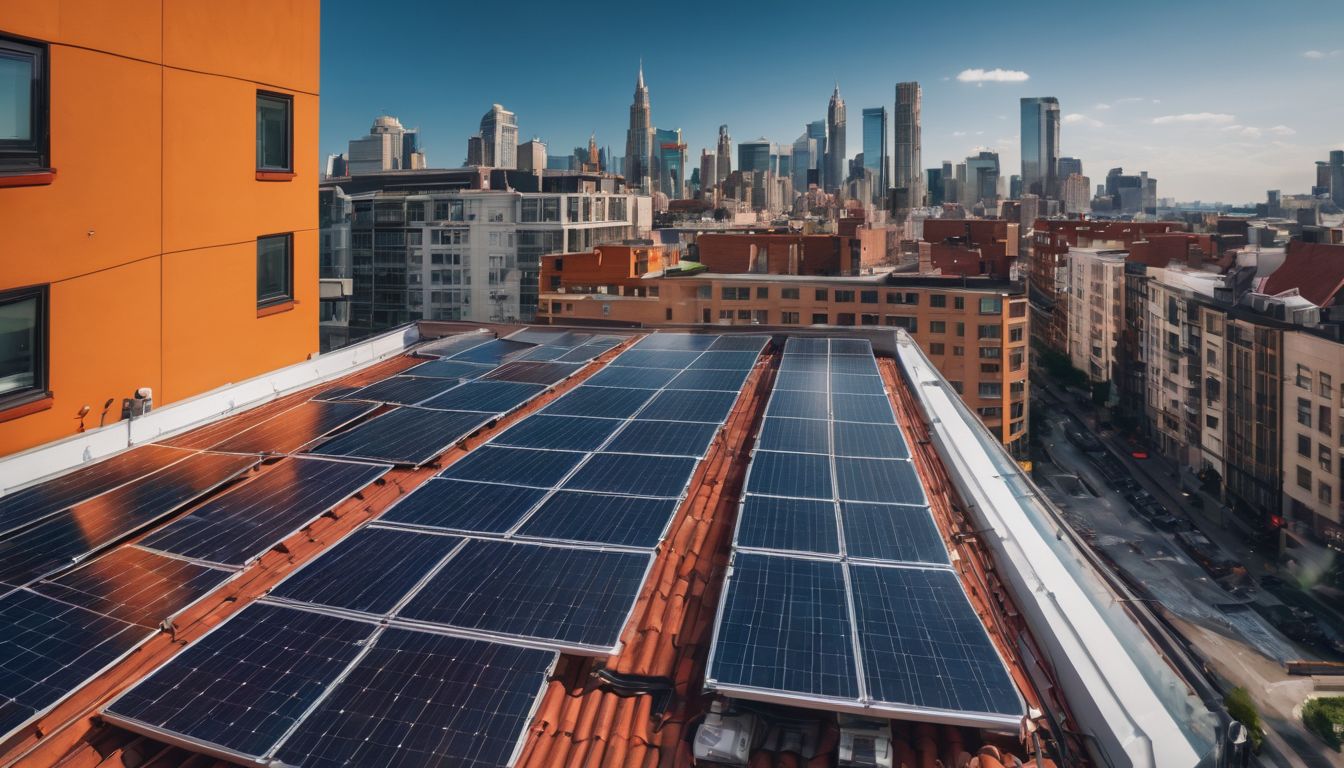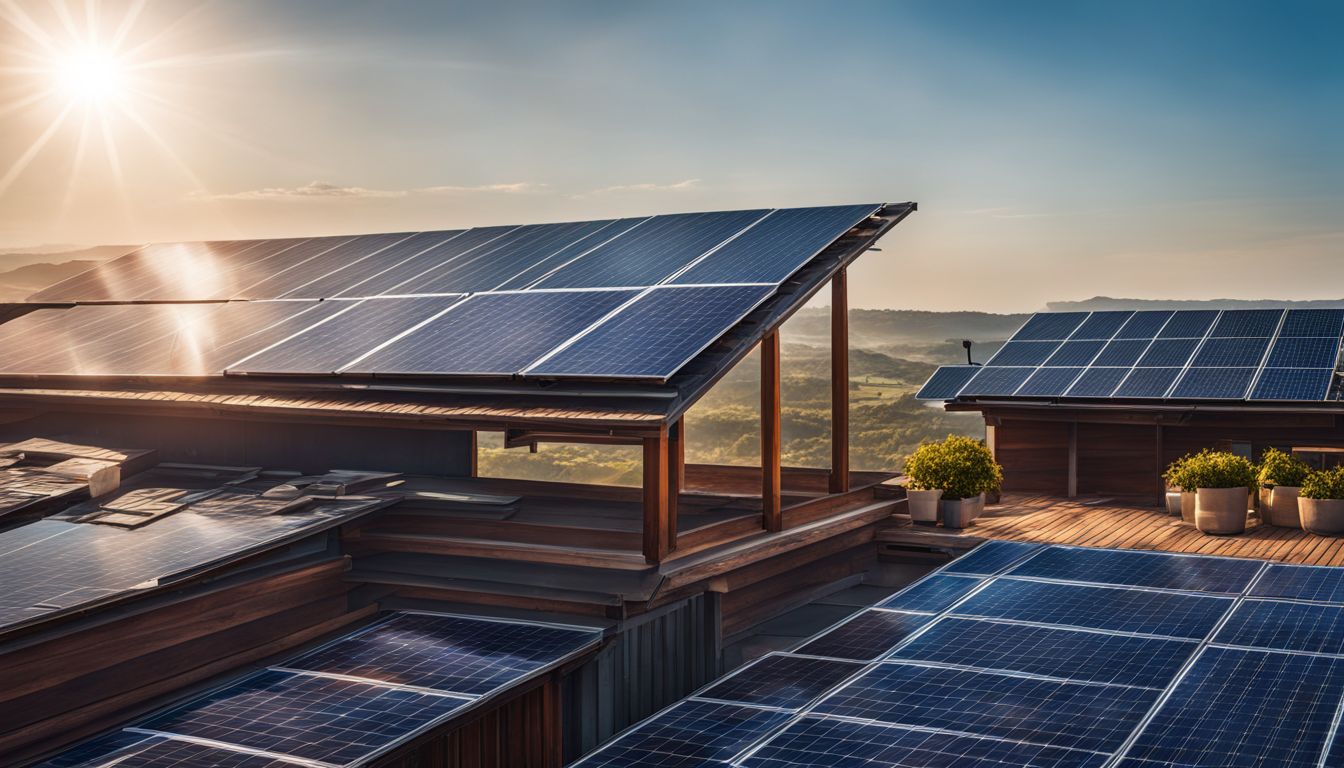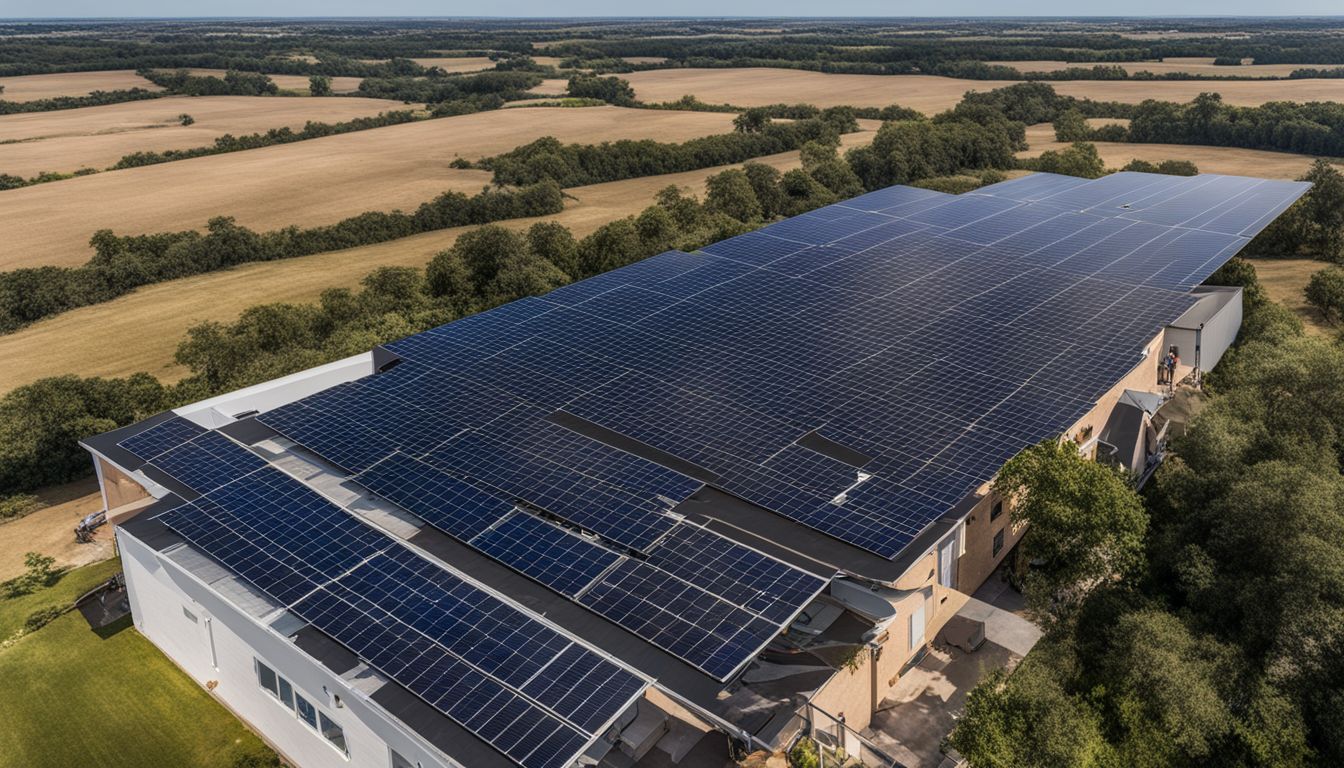Do I need permission from Eskom to install solar panels?

As load shedding becomes a frequent headache, you might be thinking about harnessing the sun's power with solar panels at home. Eskom requires customers to register solar installations, regardless of whether they feed back into the grid or not.
Our guide will navigate through the process of gaining permission and installing your system properly, ensuring peace of mind as you switch to sustainable energy. Discover how simple going solar can be—read on!
Key Takeaways
- You must get Eskom's okay to install solar panels in your home, even if they don't feed electricity back into the grid.
- Small-scale embedded generators need to be licensed and registered with NERSA, which Eskom will check.
- Hiring a certified electrical contractor who understands solar PV systems is very important for a safe and legal installation.
- A 5kW solar system can power many household items like fridges and TVs using solar energy.
- Going off-grid has its perks, like lower bills and no blackouts, but it also comes with high upfront costs and the need for good battery storage.
Understanding Solar Panels

Solar panels, or solar photovoltaic (PV) systems, are a clever way to get power from the sun. They turn sunlight into electricity that you can use in your house or business. Each panel is made up of many cells that do this job.
When you put lots of these panels together, they make more power.
Putting in solar PV panels helps with load shedding because they give you an energy source when there's no power from the grid. People like them because they can lower bills and provide clean energy without harming the air we breathe.
In South Africa, switching to solar can also mean getting tax incentives, which save money. These benefits make solar PV systems popular for those wanting to be kinder to our planet and cut down on energy costs.
https://www.youtube.com/watch?v=STx45kZztCI
Regulatory Requirements for Solar Panel Installation

To ensure compliance with regulations, it is essential to select the right electrical contractor who understands and can meet regulatory requirements for solar panel installation. This includes adherence to safety and quality assurance standards, as well as obtaining necessary permits and approvals for grid connections.
https://www.youtube.com/watch?v=uvKrx-bW6XY
Selecting the Right Electrical Contractor for Compliance
Putting up solar panels means you must follow the rules. Picking a skilled electrical contractor is a crucial step.
- Check their qualifications. Make sure your contractor has the right papers and knows about solar PV systems.
- Ask for proof of registration. They should show they are registered with the Department of Employment.
- Look for experience. Choose someone who has put in many solar systems and understands the process well.
- Demand a Certificate of Compliance (CoC). This paper shows that your solar setup meets all safety standards.
- Talk about your needs. Your contractor should know what you want and have a clear plan to meet these needs.
- Check past work. Good contractors will have happy customers who can tell you about their work quality.
- Make sure they follow safety laws. All their work should respect the Occupational Health and Safety Act.
- Get a full-service provider. Some contractors can design, supply, and fit your system, making things simpler for you.
- Insist on energy-efficient options. Your contractor should offer devices that save power, like energy-star-rated parts.
- Understand the costs. They should explain all fees so there are no surprises later with your budget.
Meeting Regulatory Requirements
Meeting regulatory requirements is key to installing solar panels safely and legally. You must follow specific rules to make sure your solar panel system doesn't cause problems.
- First, choose a certified electrical contractor who knows about small-scale embedded generation (SSEG). This person can help you install your solar panels.
- Make sure your installation follows all electrical installation regulations. This keeps everything safe and avoids trouble with the law.
- Your solar panel system needs to be registered if it's connected to the grid. This lets the power company know about your setup.
- Work with homeowners' associations or property management if you live in a complex or estate. They might need a special meeting to agree on your solar panel plans.
- A certified installer should put it in your system. They will use the right tools and follow safety rules so that everything works well and lasts a long time.
Safety and Quality Assurance
Safety and quality are crucial when installing solar panels. Your installation must follow strict rules to make sure it's safe and works well. It is important that the person who puts in your solar panels knows what they're doing.
They should have proof from a trusted group saying their work meets high standards.
For your peace of mind, a good service provider will check everything carefully. They will see if your site is okay for solar panels and make sure everything follows the law. This helps prevent problems with electricity or danger at home.
Always choose someone who has the right papers to show their work is good and safe.
Do You Need Permission from Eskom to Install Solar Panels?
Yes, you need permission from Eskom to put solar panels on your house. This is because the power you make might go back into the main electricity supply. Eskom wants to know about this so they can make sure it's safe and works right with their system.
Even if your solar panels don't send power back, you still have to get Eskom's okay. They say all systems that can make electricity at home must be checked or taken down if not allowed.
You could have to pay a service fee too. But things are changing. South Africa's president said people won't need government permission for solar panels soon. For now, always ask first before setting up anything so you can follow the rules and stay safe.
https://www.youtube.com/watch?v=lNVPT8v1Ljc
What Can a 5kW Solar System Run?
A 5kW solar system packs a punch, enough to power up your home's big-ticket items. Think fridges, washing machines, and TVs all running thanks to the sun! You can even keep those lights on and charge laptops without worry.
This setup might include about 15–20 panels capturing sunlight and turning it into electricity for you to use.
Imagine a day with all your basics covered—your morning coffee brewed, phone charged, and evening news on TV—all powered by clean energy. With this kind of system, expect to run multiple appliances at once during peak sunshine hours.
Not just that—a fully charged battery means even when the sun dips, you won't be left in the dark. And let’s not forget that R72000 price tag for a switchover. It sure sounds like sweet savings while doing right by our planet!
Small-scale Scale generators
Small-scale embedded generators (SSEGs) play a crucial role in enabling homeowners and businesses to generate their own electricity. Understanding the regulations, application process, and cost considerations for SSEGs is essential for those looking to invest in renewable energy solutions.
Generator licensing and registration
You must follow some rules if you want to connect your generator to the power network. NERSA looks after the licensing and registration for this.
- All systems that feed extra electricity into the grid need a licence or must be registered with NERSA.
- You must fill out an application with NERSA if you want your grid-tied generator officially recognised.
- Charges will apply for connection work necessary once your system is on the NERSA database, and these are raised by Eskom.
- The size of your generator and what type of customer you are will determine the kind of approval process you go through for installation.
- You absolutely need permission from Eskom before putting in a small solar power system connected to their network.
- Your generator must be on the NERSA list. This is where all generators get checked, but this step isn't handled by Eskom distribution.
Generator network configurations
To connect a generator to the Eskom network, certain configurations are essential. These include obtaining licensing and registration for the generator, ensuring compliance with embedded generation tariff charges, and going through the application process.
Additionally, it's crucial to adhere to safety requirements for grid-tied Small Scale Embedded Generators (SSEG), which necessitate permission from Eskom. When configuring the generator network, homeowners must be mindful of meeting these requirements while also considering the cost implications and potential pros and cons of going off-grid.
Furthermore, understanding the technical aspects such as bi-directional meters, electricity distribution boards, and three-phase power connections is vital in ensuring that the generator network configurations align with Eskom's regulations for safe and effective operation.
Embedded generation tariff charges
Small Scale Embedded Generators (SSEG) need Eskom's permission for installation and grid connection. The tariff charges vary based on the type of SSEG and whether energy is exported to the grid. Eskom provides credits for energy put into the grid if it is legally connected and on a generator tariff. Unauthorized systems must be authorised or decommissioned, with a service fee charged.
- Tariff Charges
- The tariff charges applicable depend on the type of small-scale embedded installation and whether energy is being exported into the grid.
- Credit for Energy Input
- Eskom will give credits for energy put into the grid if the supply is legally connected and on a generator tariff.
- Unauthorized Systems
- Unauthorized embedded generation systems must be authorised or decommissioned, with a service fee to be charged.
- Permission Requirement
- Small-scale embedded generators require permission from Eskom for installation and grid connection.
Application process
To operate a generator, customers need to apply with NERSA or their local utility for registration or a license. The application process involves completing the relevant sections of the application in full. Here is what it includes:
- Submission of required documentation to NERSA or the local utility for review.
- We are waiting for approval from Eskom and the necessary time for a connection.
- Compliance with regulatory requirements and safety standards relevant to generator installation and operation.
- Obtaining permission from Eskom if the generator installation is grid-tied to the Eskom network.
- Adhering to any additional local regulations and requirements regarding solar panels and generator installations.
Cost Considerations
When considering the cost of installing solar panels, it's important to factor in the initial investment in purchasing and installing the system. Additionally, ongoing costs such as maintenance, insurance, and any potential upgrades should be taken into account.
It’s also worth looking into potential financial incentives or tax rebates that may be available for renewable energy installations. Understanding these cost considerations can help you make an informed decision about whether solar panels are a viable option for your energy needs.
The regulations surrounding the installation of solar panels vary by location and can impact costs. It’s essential to check with your local utility provider or regulatory body to understand any fees or charges associated with grid access and compliance with specific rules regarding solar panel systems.
Being aware of these factors is crucial for budgeting accurately when planning a solar panel installation.
Pros and Cons of Going Off-Grid
Exploring the option of going off-grid with solar power reveals a mix of benefits and drawbacks, each consequential in its own right. Here’s a concise comparison:
| Pros of Going Off-Grid | Cons of Going Off-Grid |
|---|---|
| Energy Independence: absence of reliance on Eskom, ensuring consistent power supply without blackouts. | Initial Investment: High upfront costs for solar panel systems, batteries, and installation. |
| Environmental Impact: reduction in carbon footprint by using renewable solar energy. | Maintenance Responsibilities: Sole responsibility for system upkeep and repairs falls on the homeowner. |
| Cost Savings: A long-term reduction in electricity bills can offset the installation costs over time. | Energy Storage: There is a need for sufficient battery storage to manage power supply during low sunlight periods. |
| Utility Deregulation: Freedom from tariff hikes and energy policies set by utility providers. | Surplus Energy: Lack of infrastructure to sell back excess power generated, potentially wasting resources. |
| Resale Value: Potential to increase property value with a fully functional renewable energy setup. | Isolation: Detachment from the grid might make accessing emergency or backup power more challenging. |
Transitioning to an off-grid solar system could signify a self-sufficient lifestyle, yet it demands thorough planning and consideration of both financial and practical implications. Deciding on such a lifestyle change involves weighing the autonomy against the commitment and cost.
Conclusion
In conclusion, getting authorization from Eskom or the local municipality is necessary to install solar panels. It’s important to comply with regulatory requirements for grid-tied systems.
Customers should apply for registration or a licence with NERSA or their local utility, depending on the system's size. President Cyril Ramaphosa has outlined government support for solar panel installation.
Remember, all grid-tied generator installations need permission from Eskom before connecting to the power grid.
Discover the capabilities of a 5kW solar setup and what you can power with it by visiting our detailed guide here.
FAQs
1. Why do I need to talk to Eskom before putting solar panels on my roof?
You must get in touch with Eskom when you want rooftop solar because they handle the electricity network. They'll tell you how to safely connect your panels to their grid-tied system.
2. Can Eskom stop me from using other forms of energy, like wind generation?
Eskom can't prevent you from exploring alternative energy sources like wind generation, but connecting them to the power grid needs their approval for safety and technical reasons.
3. How do smart meters work with solar panels and Eskom's system?
Smart meters track your home's energy consumption, and any extra electricity from your solar goes back into the power grid. It helps manage energy flow and could save money by using off-peak tariffs.
4. What should homeowners associations know about installing inverters for solar systems?
Homeowners associations should understand that inverters change DC current from solar panels into AC power for home use, and this setup must meet requirements set by suppliers within Eskom's distribution network.
5. Do I have to change my pre-paid meter if I install a grid-connected solar panel system at home?
When adding a grid-connected solar system, it might be necessary to swap out your pre-paid meter for one that works with both generated and consumed electrical power on the web-based management platform.
6. Is there anything special about setting up a three-phase circuit breaker with a new solar panel system?
Yes, setting up a three-phase circuit breaker is vital as it handles high loads of electric supply safely—it stops surges while keeping everything running smoothly when connected with alternative energy-efficient systems.










